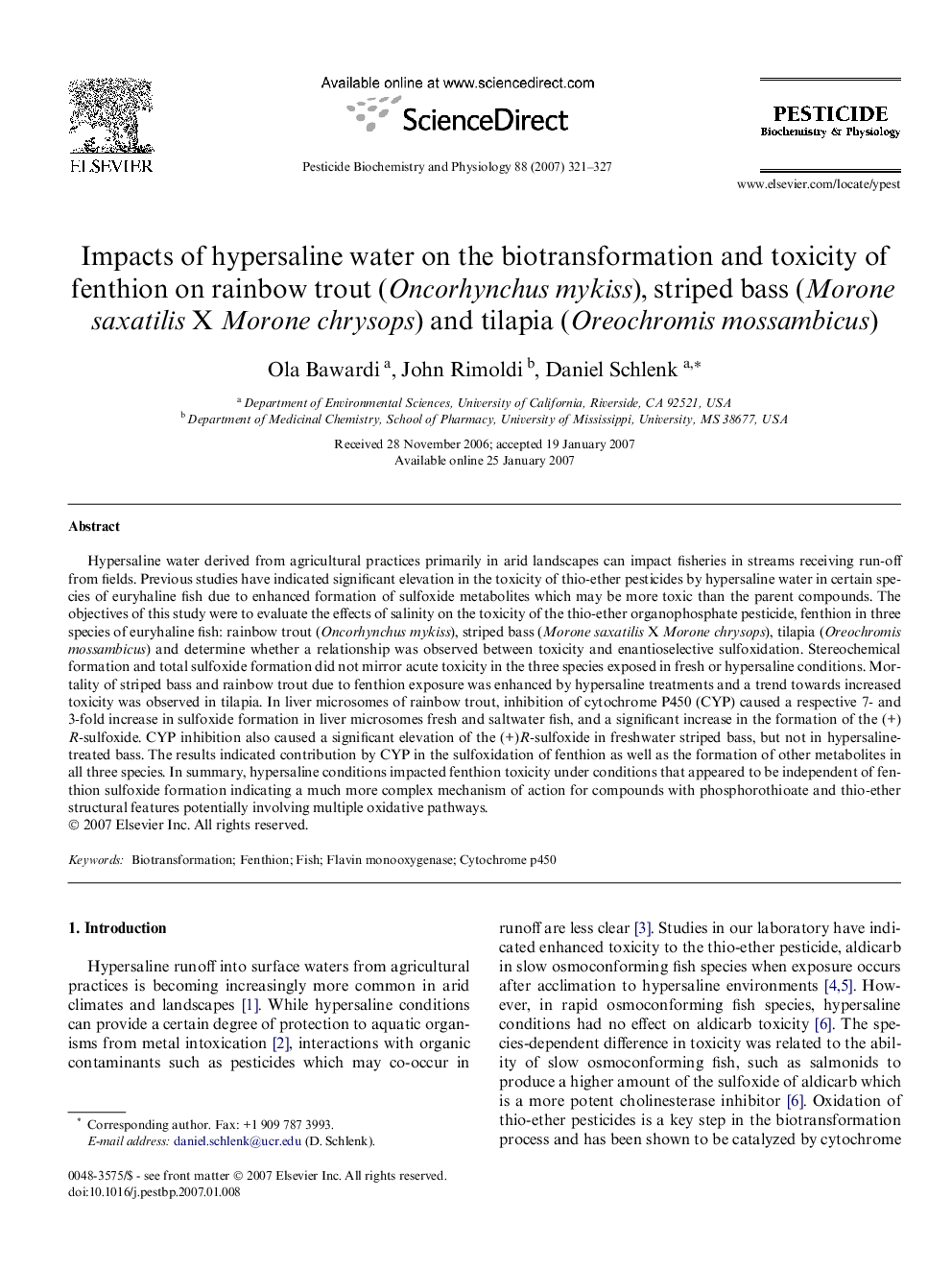| کد مقاله | کد نشریه | سال انتشار | مقاله انگلیسی | نسخه تمام متن |
|---|---|---|---|---|
| 2009847 | 1066690 | 2007 | 7 صفحه PDF | دانلود رایگان |

Hypersaline water derived from agricultural practices primarily in arid landscapes can impact fisheries in streams receiving run-off from fields. Previous studies have indicated significant elevation in the toxicity of thio-ether pesticides by hypersaline water in certain species of euryhaline fish due to enhanced formation of sulfoxide metabolites which may be more toxic than the parent compounds. The objectives of this study were to evaluate the effects of salinity on the toxicity of the thio-ether organophosphate pesticide, fenthion in three species of euryhaline fish: rainbow trout (Oncorhynchus mykiss), striped bass (Morone saxatilis X Morone chrysops), tilapia (Oreochromis mossambicus) and determine whether a relationship was observed between toxicity and enantioselective sulfoxidation. Stereochemical formation and total sulfoxide formation did not mirror acute toxicity in the three species exposed in fresh or hypersaline conditions. Mortality of striped bass and rainbow trout due to fenthion exposure was enhanced by hypersaline treatments and a trend towards increased toxicity was observed in tilapia. In liver microsomes of rainbow trout, inhibition of cytochrome P450 (CYP) caused a respective 7- and 3-fold increase in sulfoxide formation in liver microsomes fresh and saltwater fish, and a significant increase in the formation of the (+)R-sulfoxide. CYP inhibition also caused a significant elevation of the (+)R-sulfoxide in freshwater striped bass, but not in hypersaline-treated bass. The results indicated contribution by CYP in the sulfoxidation of fenthion as well as the formation of other metabolites in all three species. In summary, hypersaline conditions impacted fenthion toxicity under conditions that appeared to be independent of fenthion sulfoxide formation indicating a much more complex mechanism of action for compounds with phosphorothioate and thio-ether structural features potentially involving multiple oxidative pathways.
Journal: Pesticide Biochemistry and Physiology - Volume 88, Issue 3, July 2007, Pages 321–327